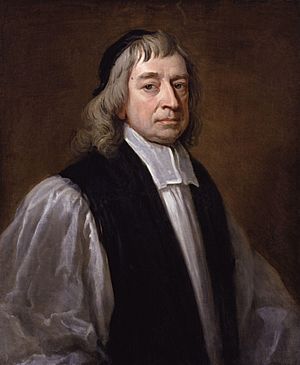Compton Census facts for kids
The Compton Census was like a big survey in 1676. It counted people in England and Wales. The main goal was to find out their religion.
Contents
Why Was This Survey Done?
King Charles II had a chief minister named Lord Danby. Danby wanted to support the Church of England. This was the main church at the time. The King worried that other religious groups, called Nonconformists, might become too strong.
Lord Danby's Plan
So, Lord Danby decided to do a special survey. He wanted to show that Nonconformists were a smaller group. This survey was called an "ecclesiastical census." It focused on religious groups.
Who Led the Survey?
The top church leader, the Archbishop of Canterbury, was too sick to help. So, Danby asked Henry Compton, the Bishop of London, to lead the survey. Bishop Compton was in charge of gathering all the information.
What Questions Did They Ask?
Bishop Compton was given clear instructions for the survey. He asked church leaders to find out three main things:
- How many people or families lived in each local church area (parish)?
- How many people were Roman Catholics? These were sometimes called "Popish recusants."
- How many other Dissenters lived there? These were people who did not attend Church of England services.
What Were the Results?
After Bishop Compton received all the answers, he looked at the numbers. He made some estimates about the different religious groups:
- For every 23 people who belonged to the Church of England, there was 1 Nonconformist.
- For every 179 people who belonged to the Church of England, there was 1 Roman Catholic.
- If you counted both Church of England members and Nonconformists together, there were 187 of them for every 1 Roman Catholic.
These numbers helped leaders understand the religious makeup of England and Wales in 1676.


